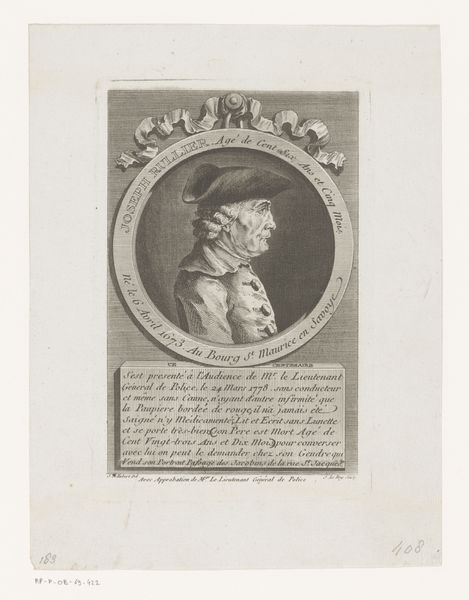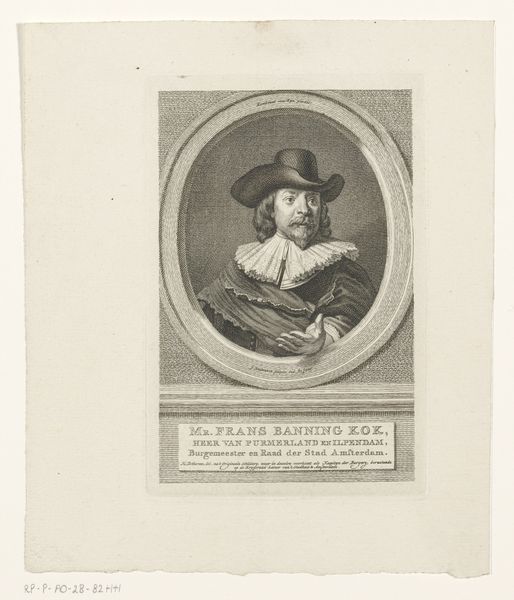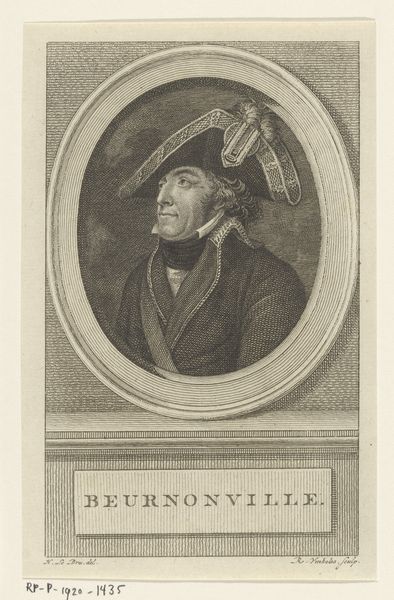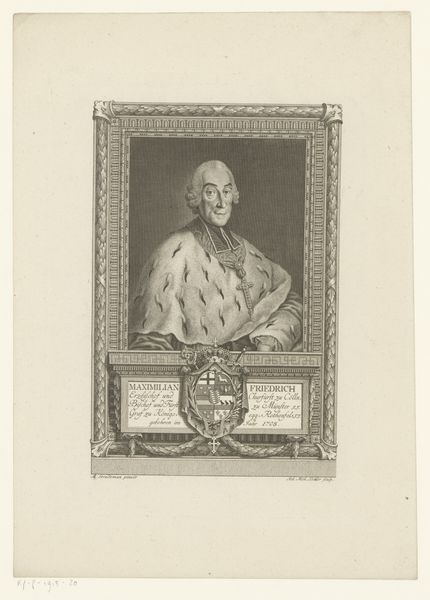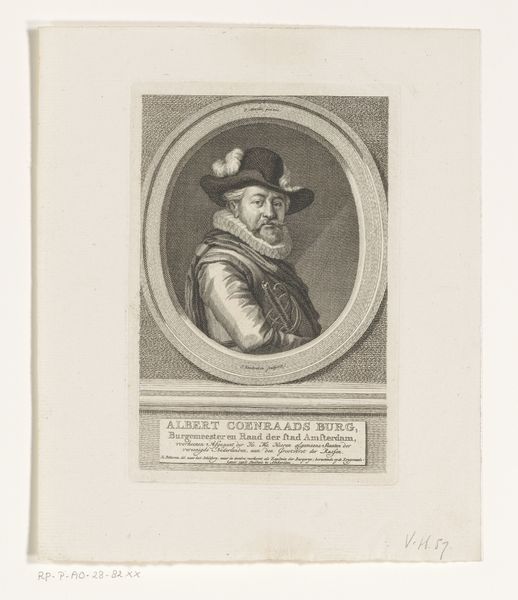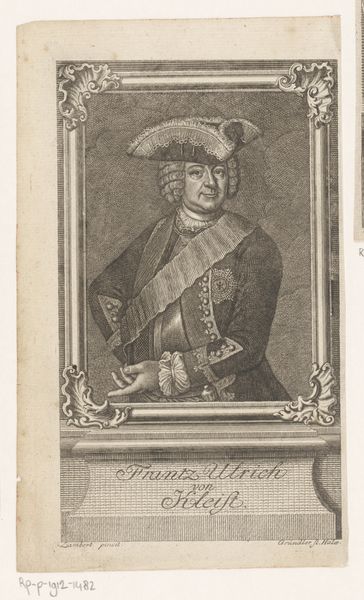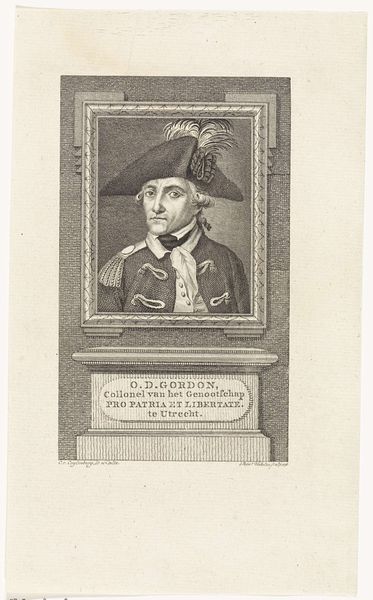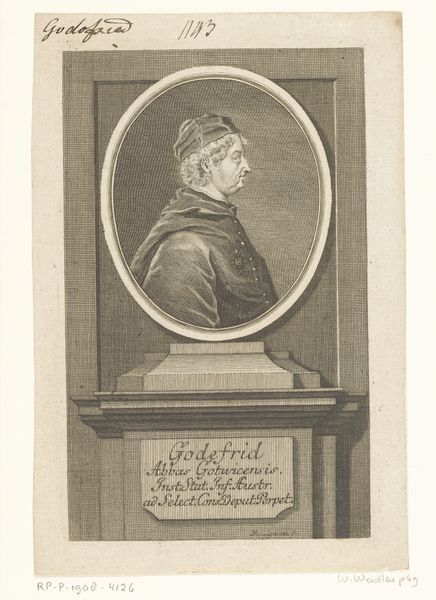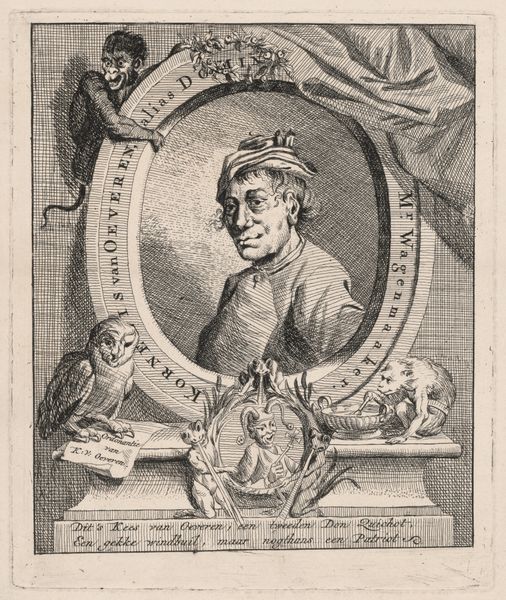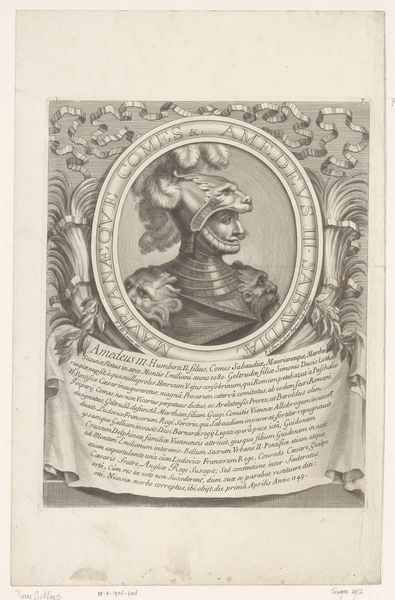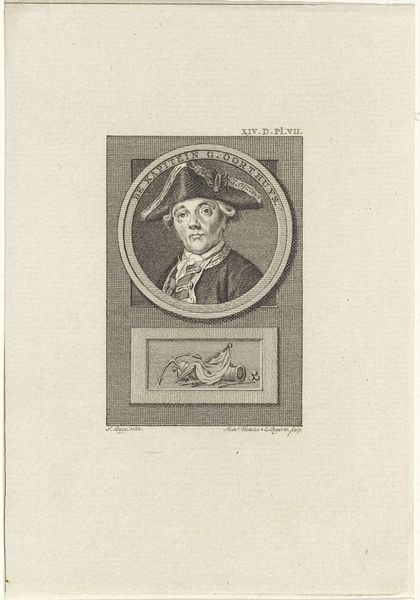
print, engraving
#
portrait
#
neoclacissism
# print
#
old engraving style
#
19th century
#
history-painting
#
engraving
Dimensions: height 156 mm, width 99 mm
Copyright: Rijks Museum: Open Domain
Editor: So here we have Reinier Vinkeles' "Portret van Jean-Charles Pichegru," made sometime between 1794 and 1809. It's an engraving, currently residing at the Rijksmuseum. I find the subject's expression somewhat unsettling, a kind of detached amusement. What catches your eye when you look at this print? Curator: You know, it’s interesting you pick up on that unease. I think it’s precisely the artist grappling with how to represent power during a time of revolutionary upheaval. There’s the stiff formality of the neoclassical style attempting to contain a man, Pichegru, who was anything but containable. I see a ghost of the Ancien Régime battling it out with the burgeoning spirit of republicanism – all within the space of a single portrait. What do you make of the architectural elements framing him? Almost like he's been put on display. Editor: That's a clever way to frame it, a visual tug-of-war! The architectural frame does feel like a deliberate choice, like he's a monument being presented. Is that common for portraits of military figures from this period? Curator: It was becoming increasingly common, yes. Think about the role of portraiture shifting from depicting aristocracy to lionizing figures in the new republic. Framing them like classical busts gives them a kind of immediate gravitas, instantly places them in conversation with centuries of “great men.” But tell me, does it convince *you*? Does it elevate Pichegru, or does it feel like a costume? Editor: It's funny you say that; it does feel like a costume. Maybe it is intentional? To show a powerful figure being forced into a role... I initially saw coldness, but now there is something performative too. Curator: Precisely! And maybe that tension *is* the point. It is not a photograph; the artist cannot catch Pichegru unguarded. What we *can* see is the very construction of his image, a general caught between worlds. Editor: Well, I certainly see more depth now than just an unsettling stare. Thanks! Curator: My pleasure! Sometimes, a second look is all it takes.
Comments
No comments
Be the first to comment and join the conversation on the ultimate creative platform.
